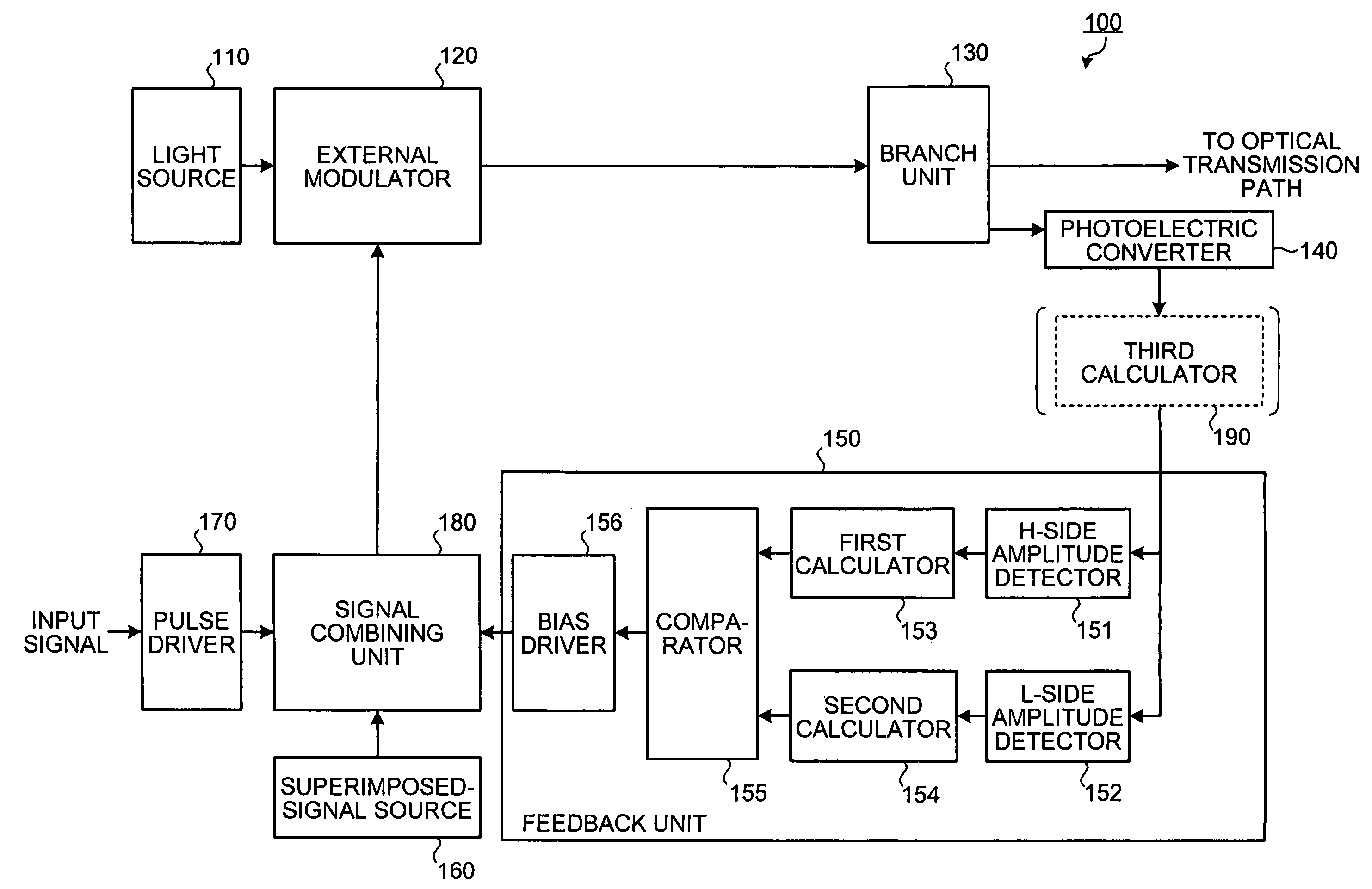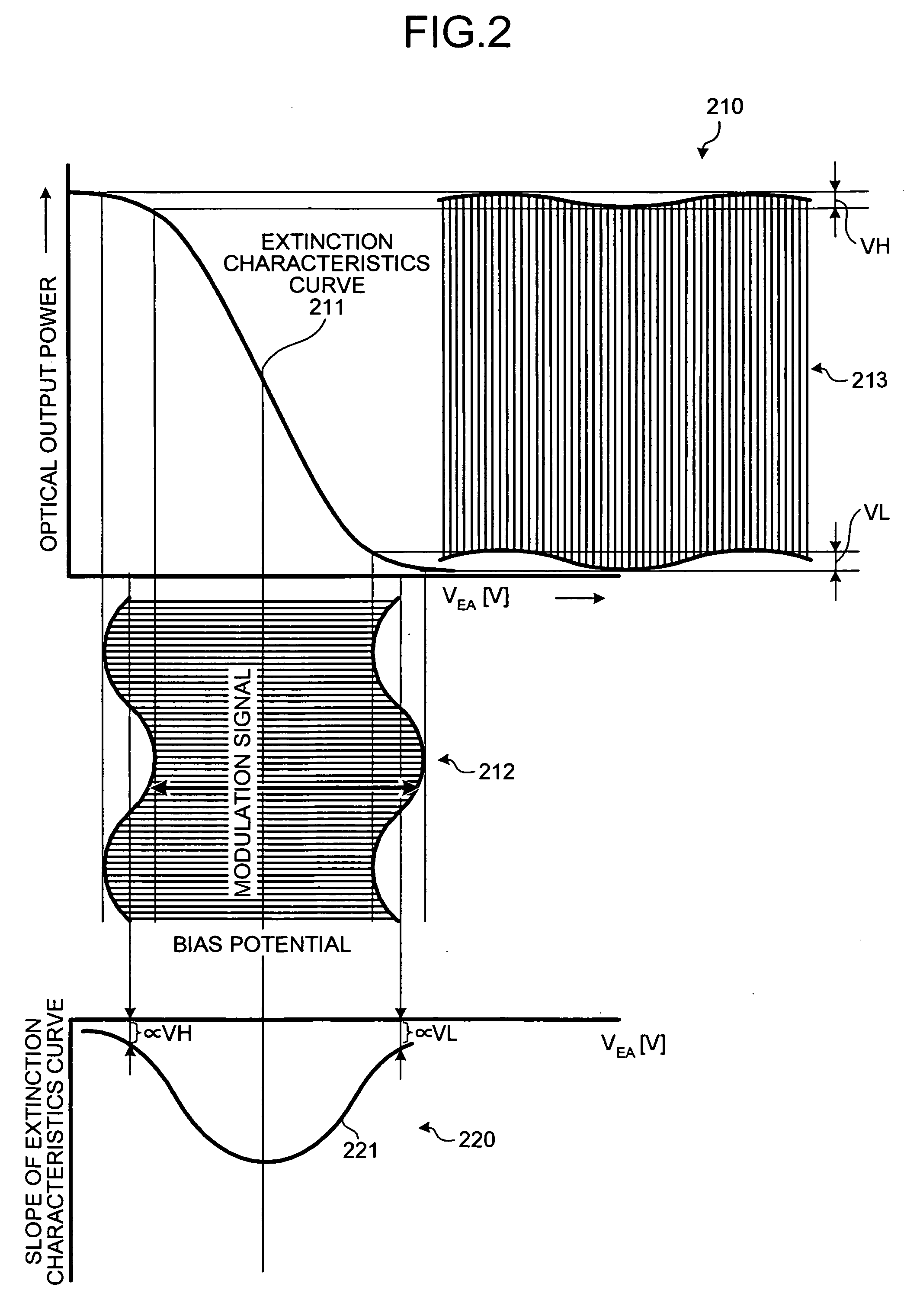Method and apparatus for controlling bias point of optical transmitter
- Summary
- Abstract
- Description
- Claims
- Application Information
AI Technical Summary
Benefits of technology
Problems solved by technology
Method used
Image
Examples
second embodiment
[0043] A procedure of a bias point control according to the present invention is explained next with reference to FIGS. 4 and 5. The bias point control can be widely applied to modulators having different extinction characteristics from that shown in FIG. 2, that is, point-asymmetrical extinction characteristics shown in FIG. 4. A horizontal axis of a graph 410 represents a voltage VEA (V) of an electric signal input to the external modulator 120, and a vertical axis of the graph 410 represents optical output power of an optical signal output from the external modulator 120. A curve 411 represents extinction characteristics of the external modulator 120. A horizontal axis of a graph 420 represents the voltage VEA (V) of the electric signal input to the external modulator 120, and a vertical axis of the graph 420 represents a slope of the curve 411.
[0044] When a modulation signal 412 is input to the external modulator 120, the external modulator 120 outputs an optical signal 413. The...
third embodiment
[0053] A procedure of a bias point control according to the present invention is explained next with reference to FIG. 6. The bias point control can be widely applied to modulators having point-symmetric extinction characteristics as shown in FIG. 2, to minimize the sum of the variation widths VH and VL.
[0054]FIG. 6 is a flowchart of the bias control according to the third embodiment. A reference potential V2 for the comparator 155 is set to 0, and a variable S is set to 1 (step S601). The bias driver 156 sets the EA bias as the initial bias point (step S602). A superimposed signal from the superimposed-signal source 160 and a modulation pulse from the pulse driver 170 are input to the signal combining unit 180 (step S603). The light source 110 inputs light to the external modulator 120 (step S604). The photoelectric converter 140 converts the light output from the external modulator 120 into an electric signal (step S605).
[0055] The H-side amplitude detector 151 detects the variat...
PUM
 Login to View More
Login to View More Abstract
Description
Claims
Application Information
 Login to View More
Login to View More - R&D
- Intellectual Property
- Life Sciences
- Materials
- Tech Scout
- Unparalleled Data Quality
- Higher Quality Content
- 60% Fewer Hallucinations
Browse by: Latest US Patents, China's latest patents, Technical Efficacy Thesaurus, Application Domain, Technology Topic, Popular Technical Reports.
© 2025 PatSnap. All rights reserved.Legal|Privacy policy|Modern Slavery Act Transparency Statement|Sitemap|About US| Contact US: help@patsnap.com



